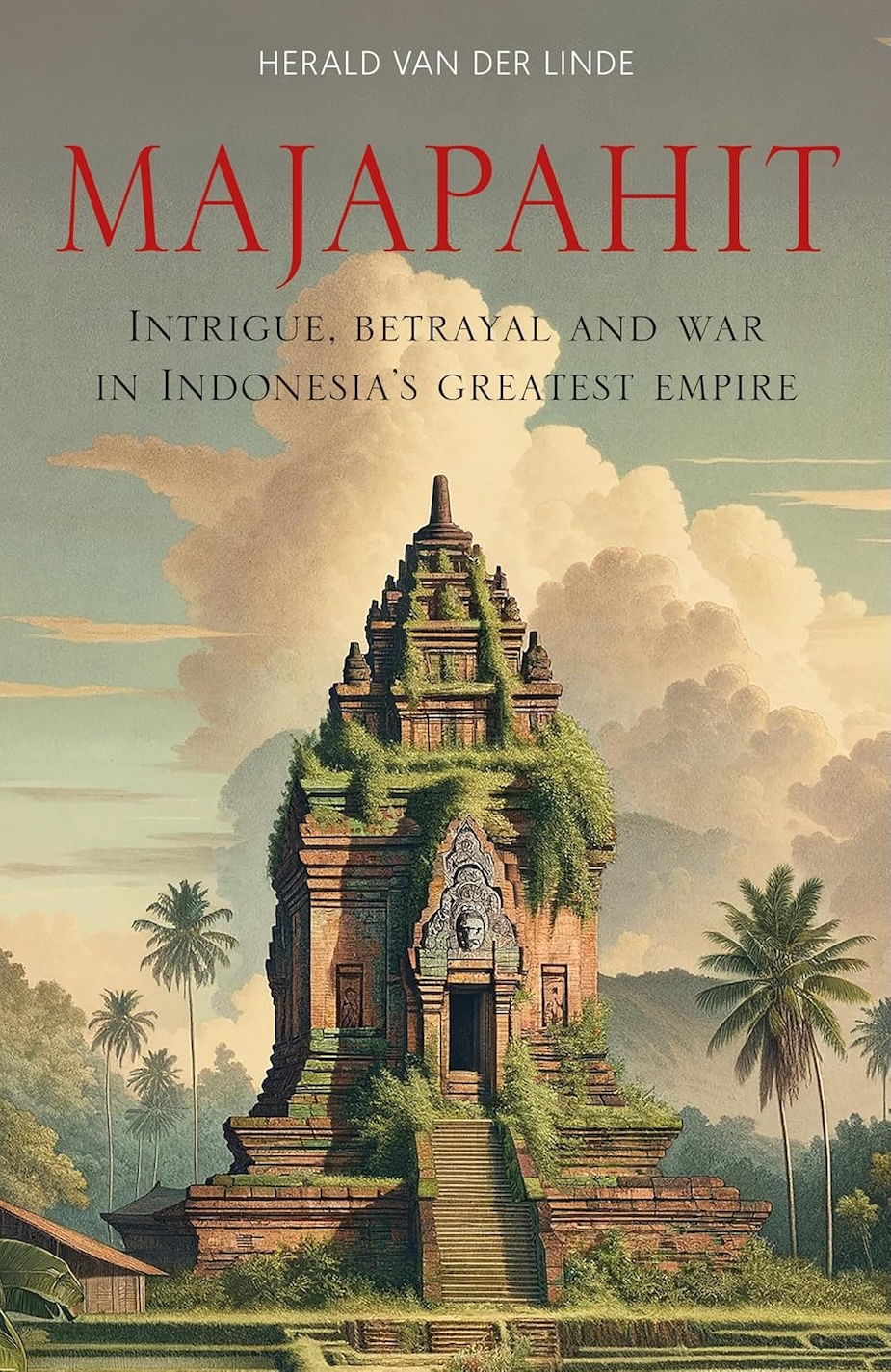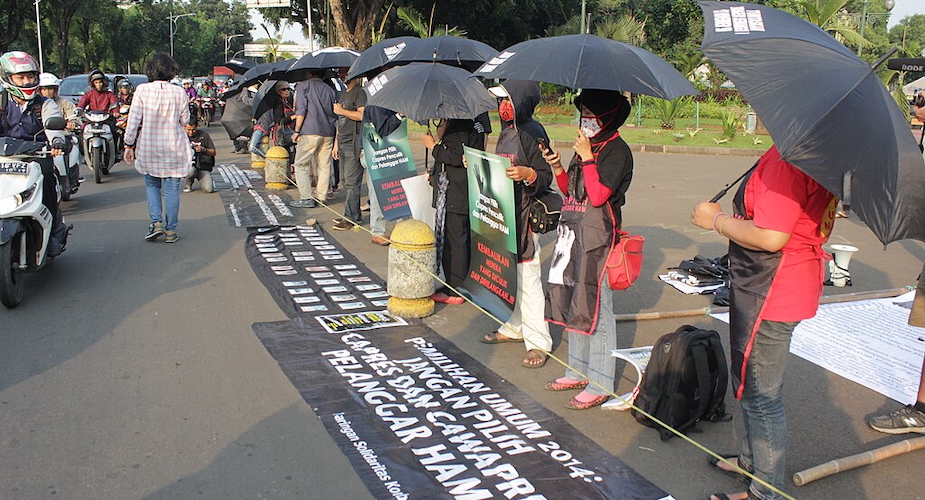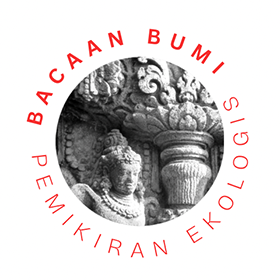Empires, grand in ambition and hard-hearted in expansion, have fought wars throughout history, whether Rome and Carthage, the Ottomans and the Habsburgs or the Mughals and the Marathas. Their foundational differences and power aspirations led to numerous wars, the end of dynasties and cartographic reconfigurations, yet underneath the blood and victory runs a common fate: the unavoidable cycle of rise and fall. Just as the second law of thermodynamics dictates that entropy in an isolated system must increase, does the political realm of empires follow a similar teleology? Is decline not just a possibility, but an inevitability?
It is this narrative that Herald van der Linde’s Majapahit: Intrigue, Betrayal and War in Indonesia’s Greatest Empire so brilliantly brings to life. His work tries to exhume the splendour and frailty of the Majapahit, a mighty empire in Asia but which now remains in the shadows of forgotten history. The grandeur of the Majapahit was like a towering banyan in the forest of the empires. Yet, the English-speaking world remains largely oblivious to its legacy, steeped in the comfortable clutch of Eurocentrism, an intellectual drawback that continues to shape knowledge production.
Linde, an expert raconteur, starts the fascinating Majapahit tour with an intriguing story, immediately ensnaring the reader into the depths of the empire’s rich history. The kingdom, which was ‘just a pile of ruins’ in the aftermath of colonial subjugation, was suddenly brought to life, ‘when a new manuscript, the Nagarakertagama, written at the height of Majapahit’s power, was discovered’. The story of the discovery unfolds with a drama so arresting that it could rival the best of contemporary soap operas. As Linde writes,
on a November morning in 1894, Dutch philologist Jan Laurens Andries Brandes snatched the manuscript from a fire raging inside a palace being overrun by Dutch soldiers. If it weren’t for his quick response, perhaps the best primary historical source for the Majapahit empire at its peak, would have been lost forever.
Linde’s pop-historical narrative is full of many such fascinating vignettes, crafted to evoke mass appeals. The enigmatic grandeur of Majapahit, a place of ‘intrigue, murder, secrets, suspense, revenge and war in a land filled with beautiful temples and imposing palaces’, as a subject of inquiry, provided the author with a fertile ground to showcase his narrative prowess. Even the very etymology of the empire evokes wonder. Legend has it that a resting soldier, upon biting into a fallen fruit from a nearby tree, 'screwed up his face like a fallen macaque who had swallowed a wasp, and quickly spat out the bitter fruit'. Soon jokes emerged that the whole forest was full of ‘bitter maja’ or 'maja-pahit' and subsequently the town was named Majapahit.
The book takes a 'Great Man' view of history and as such introduces the readers to various 'heroic characters' who changed the course of the empire. Family feuds, betrayals, fratricide, conquest and shrewd stratagems run through the heart of Majapahit’s saga, all meticulously chronicled by respective court scribes. Their manuscripts serve as an important source for Linde’s primary research.
The author opens his narrative by taking us to the early days of thirteenth century eastern Java, during the formation of the Rajasa dynasty of Singasari. In his romanticised, heroic style of storytelling, Linde introduces us to his first protagonist, ‘Ken Arok – a robber turned loyal’ who united ‘the valleys east and west of mount Kawi after two hundred years’ and established the all-powerful Rajasa dynasty. Kartanegara, Linde’s next influential protagonist, extended Singasari’s influence far beyond Java, and his reign was the start of the ‘geographical and political concept of Indonesia as a single entity’.
The political fortune of Singasari was however stalled by King Jayakatwang, who subsequently established the Kingdom of Kediri. However, he was eventually defeated by King Wijaya, Kartanegara's son-in-law, using the troops of Kublai Khan and the Yuan dynasty that were invading Java. This event was such a display of diplomatic finesse that it would leave today’s suit-laden diplomats scrambling to take notes. Wijaya would later betray the Mongols and go on to establish Majapahit, the mighty empire at the heart of Linde’s book.
Notwithstanding the astute manoeuvring that paved the way for the establishment of Majapahit, the enduring symbolism that ‘our ancestors were the only few who defeated the Mongols’ continues to be evoked by Indonesian politicians. This persistent appeal to Majapahit’s legacy highlights its lasting influence in nation-building and the ever-expanding political potency of the past.
The 'dawn of the golden age of Majapahit’, the author argues, took shape in the wake of Gajah Mada’s rise and his formidable ally ‘Queen Gayatri', the backdoor strategist during Queen Tribhuwanatunggadewi’s reign. By fusing Gajah Mada’s strength with her sharp political acumen, Queen Gayatri would go on to set in motion ‘the revival of her father’s ideal of a unified archipelago, a "Nusantara", a proto-Indonesia'.
This legacy of Majapahit’s unification project goes beyond historical memory, shaping modern Indonesia in profound ways. Nusantara, Indonesia’s new capital city being constructed on the island of Borneo, traces its nomenclature to Majapahit. More than just a name, Gajah Mada’s role in unifying the Indonesian archipelago cemented his status as a national hero in contemporary Indonesia. His legacy has been preserved across various domains, from the Indonesian Navy to academia — the country’s first university in Yogyakarta, established in 1946, proudly bears his name.
Linde’s next and perhaps the last 'influential' hero is Hayam Wuruk. He came to power at the age of 16, at a time when the great 'patih' (prime minister) Gajah Mada stood at the pinnacle of his power. Under their combined leadership, Majapahit expanded its influence across the Indonesian archipelago. While its core regions were directly governed by Hayam Wuruk, the vast peripheral territories acknowledged his supremacy, adhering to the principles of the ‘mandala concept’: a system of layered sovereignty that defined the empire’s vast reach. His court scribe, the famous historian Prapanca wrote the Nagarakertagama, a eulogy to King Wuruk, which gave the modern world a first detailed description of the Majapahit. After his death, Majapahit rapidly declined and, along with it, the last expression of Hindu-Buddhist civilisation in Java.
The decline of the great Javanese Hindu-Buddhist empire was not a demise in the truest sense. In its aftermath, the succeeding Sultanates continued to conjure myths to establish their lineage to Majapahit’s grandeur. As Linde aptly states, ‘Majapahit was immortalised in legend’. Perhaps, the splendour of Majapahit, vast as the ocean's embrace, could not be drowned by the tempests of war. The author contends that 'Majapahit didn’t disappear, it simply moved to the next island. Bali remains the incarnation of Majapahit'. Rather than relegating to obscurity, the great Hindu-Buddhist Javanese kingdom found a new life across the waters, refusing to be consigned to history.
In Linde’s otherwise grand political narrative, we do find an exploration, albeit short, into the social life of Majapahit. The author dedicates a chapter to community life in Majapahit, drawing on the works of Ma Huan, the translator of Zheng He, the master Chinese admiral man who visited Java in the early fifteenth century. The society was cosmopolitan in nature, encompassing ‘proud Brahmins with their partly shaven heads and recluses with matted hair, to widowed women dressed all in white, and Chinese and Arab traders’. Superstition, as was common in all societies of that time, prevailed. For instance, 'women were seen feeding long-tailed monkeys, for legend had it that if the monkeys mated after being fed, the women would become pregnant'. The people of the great kingdom had their own peculiarities. They were, namely, very particular about their heads: 'If a man touches their head with his hand, they at once pull out these knives and stab each other'. Majapahit, despite its glory and exceptionalism, was no different when it came to the condition of women. Instances of ‘sati’ (widow burning) were recorded. However, women played an important role in life at court in Majapahit.
Majapahit was also one of the largest thallasocratic empires of its time. The Javanese naval supremacy was a force to be reckoned with, even for the colonial empires. The Portuguese, for instance, were startled by the large size of Javanese ships – 'the deck of the "jong" was taller than that of their fleet’s flagship'.
The echoes of Majapahit still resonate in Indonesia’s socio-political culture. The colours of the Indonesian flag, the red and white and the national motto, 'Unity in Diversity', carry the imprint of this formidable empire, forming integral parts of Indonesian identity. Even political dramas, from Suharto’s coup against Sukarno to the rise of contemporary political dynasties, seem to sing the Majapahit tunes.
Amidst this enduring legacy, Linde’s fascinating historical retelling excels in introducing Majapahit through a dramatic, Shakespearean lens, where empire, betrayal and ambition take centre stage, catering effectively to a modern readership with diminishing attention spans. Linde seems to be a disciple of Virgil’s epic poetic storytelling rather than a follower of Tacitus’ historical precision. While such a conscious stylistic choice may lack the rigour of academic history writing, it nonetheless remains a commendable effort in bringing to light the regal magnificence of the Majapahit empire.
Herald van der Linde, Majapahit: Intrigue, Betrayal and War in Indonesia’s Greatest Empire, Monsoon Books Pte Ltd., 2024.
Bishnu Rathi (bishnurathi98@gmail.com) is a research scholar at Centre for Indo-Pacific Studies, Jawaharlal Nehru University. His interests lie in international relations theory, diplomacy, political theory and social mobilisation.













